Joshua Project 2000 Step 4: Producing People Profiles and Facilitating Church Adoptions

Since 1980 there has been a growing focus on narrowing the task of world evangelization down to "bite-sized" pieces so churches can take on a realistic portion of our global mission. When looking at the world as billions of people with all its complexities, we can become overwhelmed with trying to help the masses of humanity in need of the gospel. By narrowing the focus to the level of people groups, our role becomes easier to understand and accomplish. Think of it as bringing a picture into focus. When a telephoto lens is first pointed on a crowd of people it is out-of-focus; it looks like a sea of humanity without any distinct features. As the barrel of the lens is turned, features become clear. You can see the crowd with amazing detail.
Now Joshua Project 2000 is linking with the global Adopt-A-People Movement and mission agencies around the world to intensify the focus on reaching the peoples of the world who are in most need of the gospel.
Adoption Is a Serious Business What does it mean to adopt one of the peoples who are in most need of the gospel? First, it means a local congregation or fellowship group partner with their denominational or an interdenominational mission agency to pray for missionary penetration and church planting among an unreached people group. Next, a congregation might pray about partnering with that mission agency in terms of financial or personnel resources. Finally, this commitment of prayer, finances and serving is continued until the believers in the people group are capable of reaching the rest of their own people without outside (cross-cultural) assistance. We do not adopt people into our congregation. We are God's agents, praying giving, and serving to see a people adopted in His family, (Eph. 1:4-5).
While the concept and the process of adoption is simple, the commitment level must remain high. It is a serious relationship! Adoption is not something to treat lightly, like the old prayer, "Lord, bless the missionaries." Adoption requires on-going serious prayer for Muslim, Hindu, Tribal, Buddhist, Chinese and other unreached people groups. It is more than praying through a list that might include a people. Rather, its like "taking on" that group in prayer until a church is established.
People Profiles In order to keep that prayer sustained, adopting fellowships need basic and on-going information about the people for whom they are praying. One way to get this information is through a growing library of people profiles. These profiles are intended to aid the adopting party by providing information about their unreached people group. There are three main types of profiles. First, the Executive Overview. This is usually a one page summary of the location, size, status of the gospel and status of Scriptures for the people group. It is simply an introduction piece. The Adopt-A-People Clearinghouse has developed an Executive Overview for each of the peoples on the Joshua Project 2000 list.
The second is a prayer profile, designed to assist the adopting party in their prayers for their people group. The Bethany World Prayer Center is committed to providing a current and up-to-date prayer profile on each of the 1,700 groups on the Joshua Project 2000 list. (See sample profile on pages 42-43 and Mission Frontiers Sept.-Oct. '95 for more information.)
The third profile is a strategy profile. This is designed to provide vital information to those who will engage the people group in ministry. This information will assist them in entering and working with their adopted people. The Adopt-A-People Clearinghouse has strategy profiles on several hundred people groups but many of them need to be updated.
Many of the existing profiles have been produced by mission agencies and denominations. They usually produce profiles for people groups they plan to work among. When an agency is small and in need of help other ministries have sent in research specialists to produce profiles for them. Ideally, the best sources of profiles are from the agencies who are near the unreached people group. However there are groups which are not close enough to a missionary or instances where it may be difficult or unwise for the missionary to attempt this additional work load. In these cases, researchers have pulled together the best information available.
It is the desire of Joshua Project 2000 to send teams into unreached people groups for two or more weeks at a time to get on-field information for incorporation into a strategy profile. Other kinds of profiles, such as a prayer profile, can be produced from the detailed strategy profiles. These strategy profiles will then become the foundation for the long-term church-planting efforts.
The Adopt-A-People Clearinghouse (AAPC) (not to be confused with the Adopt-A-People Campaign of the U.S. Center for World Mission) is committed to helping make the Joshua Project 2000 a success. First, they will provide the Bethany World Prayer Center with a copy of the profiles they have gathered on peoples most needing the gospel. From AAPC's profiles and other sources, the researchers and writers will be able to produce accurate and up-to-date prayer profiles for each group on the list. AAPC will also play a vital role in receiving new information and for updating the database in a timely manner, using the information to link churches and agencies and track the progress churches are making toward engaging their adopted people group in ministry. Another way the AAPC will support the project is through the distribution of materials to churches who adopt the people groups.
Tracking Progress Another vital aspect of the adopt-a-people movement is tracking the progress of reaching unreached peoples on an on-going basis.
Where are we in our progress of completing this task? Knowing which people groups are covered and which are not is not only important for the strategic focus of global prayer, it is also crucial for mission agencies to avoid duplication of efforts. Are agencies from Argentina, Korea, Canada, South Africa or other countries planning to send their missionaries to the same people group? Our databases must be kept current and reflect the information that will allow the missions community to think and plan strategically.
This duplication of effort has become a serious problem for two reasons: scarce resources are wasted and harmful divisions are created. Mongolia serves as a vivid example of this problem. In the last three years, 2,500 Khalka Mongolians have become Christians. Needless to say this is one of the most heartening breakthroughs in missions. We have it from reliable resources that 46-47 mission agencies are working in Mongolia, when a mission partnership of several agencies could probably do the job.
The large scale problem comes when teams duplicate the efforts of others beyond what the situation demands--especially in high profile areas like the former USSR, Mongolia or Albania. Instead, extra teams at any location could be deployed to other unreached people groups, saving millions of dollars and more strategically using missionary personnel.
The most important issue is that mission leadership be kept informed of what others are doing in countries where they work or plan to work. The problem is multiplied when you realize that 1000's of missionaries are being sent out by 100's of mission agencies in scores of countries.
Thanks to the efforts of people like Phil Bogosian and Frank Kaleb Jansen, and modern electronic communications technology, existing and forming Adopt-A-People (AAP) ministries around the world are preparing to send and receive electronically information on the status of the gospel among unreached peoples.
In order to help facitate this, the U.S. Center for World Mission, has set up a headquarters office of its International Adopt-A-People Campaign in Manila (directed by Phil Bogosian). The purpose of this office is to partner with denominational and interdenominational mission leaders to set up nationally run AAP campaigns all around the
world. These national AAP campaigns agree to work to collect accurate field based data from their missionaries on the status of unreached peoples with which they are working and also research other unreached people groups in close proximity with their own work.
Each mission agency will submit monthly updates concerning any new initiatives among unreached peoples the agency is contemplating engaging. This will result in a very comprehensive coverage of the world's unreached peoples, by highly trained, long term, on site professionals with an excellent grasp of ethnography, missiology and church planting.
All this information will be sent by each mission agency to their national AAP campaign then on to the International AAP Campaign in Manila. There it will be collated into a new global, field-based database and sent back to each national AAP campaign monthly. Care will be used to encrypt all data to avoid any possibility of endangering pioneer missionaries or their ministry.
Once fully implemented, this database will help a mission agency in, say, Korea that is contemplating sending a team to an unreached group in Borneo, to readily see that a mission agency in the Philippines is well along with its plans to place a team among the same people group. They could then, either plan a joint strategy or select another group in Boreno with whom no agency is working. When added to Joshua Project 2000's other sources of data, this data will help Joshua Project 2000 to have a highly accurate database to work from.
Networking to Link Resources In addition to proposing additions to augment Joshua Project 2000's list of unreached peoples, the International Adopt-A-People Campaign will make substantial contributions to the Joshua Project 2000 initiative in the following ways:
- Setting up AAP Campaigns to assist mission agency leaders with the goal that over 100 countries will have AAP campaigns and 1,000,000 churches and fellowships would adopt the unreached peoples on the Joshua Project 2000 working list.
- All of the member agencies of the national AAP Campaigns will be made aware of the various Resource Networks of the AD 2000 and Beyond Movement and encouraged to participate in those networks, such as Prayer, Research, Unreached Peoples, Women's, Mobilization, etc.
- The video series, Global Countdown 2000 has produced three videos on unreached peoples and has more in production. Future videos can highlight Joshua Project 2000 ministry and activity to encourage prayer and involvement by viewers. These videos will also be available to Joshua Project 2000 leaders to share on the videos perspectives and insights that God has given them, as well as testimonies about breakthroughs around the world.
- The Global Prayer Digest, now used by over 50,000 intercessors daily, will regularly publish exciting reports concerning Joshua Project 2000 which will result in an explosion of powerful prayer focused on the peoples in most need of the gospel. There are a number of other resources available to help your church in the process of adopting a people. Write to the following for a list: Adopt-A-People Campaign USCWM, 1605 E. Elizabeth ST Pasadena, CA 91104 or phone (818) 398-2200; or email: [email protected] Adopt-A-People Clearinghouse PO Box 17490, Colorado Spring, CO 80935, or phone (719)-574-7001; or email: [email protected], International AAP Campaign PO Box 1416, 1065 Manila, Philippines, or email: [email protected] For more information on adopting a people group, mark the response form in the center of this issue of Mission Frontiers.
Sidebars
Sidebar 1 Linking with an Agency by Stan Yoder
The heart of the Adopt-A-People Strategy is the linking together of a local congregation which has "adopted" a people group with a mission agency that "selected" or even "engaged" the same people group in ministry. Some information about where mission agencies are working is available from the addresses at the end of this article.
It has been interesting to see that many churches are already helping reach an unreached people group and do not even know it. Adoption of an unreached people group in our church could take place with just a change of focus from the missionary to the people group. Maybe your congregation just needs a change of focus too. Check to see if one of the missionaries you are currently supporting is serving with an agency who is working among an unreached people group. You might be surprised. Perhaps the people group is on the list in this issue of Mission Frontiers.
I suggest that you contact the mission agency you are most familiar with and see which unreached people groups they have targeted. Some churches have asked for a list of unreached peoples from which to choose. This seems to add confusion and delay to the selection process for the local church. I know of one church that has been trying to decide for two years which people group to adopt. They have too many choices. I know of another group that has received a list of 36 people groups from a mission agency, and they cannot decide which groups to eliminate. I suggested they ask their mission agency for the top three groups according to priority for sending a church- planting team. It is much easier to pray over and choose from a list of two or three than 10,000 or 2,000, or even 36.
Sidebar 2 One Missionary's Adoption Story
For ten years Stan Yoder and his wife Valli served with World Partners, The Missionary Church, as missionaries to the Yalunka people of Sierra Leone, West Africa. Here is their story.
"Our denomination referred to us as Sierra Leone missionaries, revealing a country focus. Our churches faithfully prayed for our family and supported us financially. Then in 1980 we were unable to return to the field because of health reasons, and we were assigned to work at the U.S. Center for World Mission. Thankfully, our churches continued to pray for us and support us in this strategic ministry. We also had the privilege of serving on the mission committee of our church while serving at the U.S. Center. I asked our mission committee members if they were still praying for the Yalunkas. Their reply was no, we were praying for your family and your ministry in Pasadena.
Our church had "adopted" us, not the Yalunkas. Yet the Yalunkas are the ones in desperate need of prayer for release from Islam and animism. We went to this tribal group to bring the men and women to Jesus. Our goal was to see a church planting movement started so that all Yalunkas would have the opportunity to know God and give Him the glory He deserves. Yet, I am afraid our supporters did not fully share this goal with us. Why? They had a different focus. Now, I am not saying that praying for missionaries is wrong, we need it. But what happens when the missionary family returns because of poor health or the education needs of their children? Is the people group on the field forgotten? I'm afraid in most cases the answer is yes, because of an adopt-a-missionary focus rather than an Adopt-A-People focus."
Sidebar 3 Steps Toward Adoption by Bruce Camp
From Adoption: A Practical Guide for Adopting an Unreached People Group, available from William Carey Library
- Pray for Guidance--Adopting an unreached people begins and ends with prayer. Ask God to give you guidance. Does He want your church to adopt a people? Is now the proper time to begin such an emphasis? Petition God to prepare your church for this emphasis. Ask him to help you and the church to stay committed to the task until the people group is reached.
- Become Informed--You should learn about the Adopt-A-People emphasis before you make a decision to proceed with the adoption. One way to become informed is by subscribing to Mission Frontiers. The question which needs to be answered is: Why would this endeavor be appropriate for our congregation? If you are to proceed with an adoption, what steps should your church follow in its adoption activities? Think through how this emphasis would relate to your other missions activities.
- Discuss With Your Pastor--After you have become familiar with the basic concepts of adoption, talk with your pastor about the idea. Is he in favor of it? What advice does he have for you? Does he have a particular burden for a people or a part of the world? How does he want to be involved in the process?
- Decide With The Missions Committee--What are the pros and cons for your church in adopting an unreached people? Why do you collectively believe that God wants you to adopt a people at this time? A key question to answer is: Who will be the champion for this emphasis? As a committee, you need to begin to set some goals. One of the goals must be to decide upon the criteria for the selection of the people. Another goal which needs to be established early in the process is to determine which strategy of adoption you wish to pursue.
- Consult With Church Leadership--In most churches, the missions committee needs to inform and ask for approval from the church leadership in regard to new major missions commitments. Confer with your leaders about your plans. Do they have any input which you should seek in regard to the selection of a people? Ask them to join you in prayer for the completion of this endeavor. Additionally, double-check to make sure that your pastor is aware of and committed to your plans.
- Contact a Mission Agency--Your denominational leaders might have some people groups which they would like to suggest to you for you to consider for adoption. Ask them if they have such a list. Do any of your church missionaries work with an unreached people? Decide which agency you want to partner with in reaching the unreached.
- Pray About Your Choice--As you continue your research on several groups that the agency has recommended, ask God to show you which group He wants you to adopt. Pray that your committee would have unity in this decision.
- Choose a People--After you have refined and prioritized your church's criteria for selection, which peoples surface as the best candidates for your adoption and why? Once you have made your decision, continue your research.
- Pray for Evangelization--The goal of the adoption is to see a church-planting movement established that is capable of evangelizing the entire people group. Pray that this would happen. Ask God to open the hearts of the unbelievers so that they would come to know Jesus Christ personally. Pray for cross-cultural workers to go to the people. Ask God to restrict any demonic forces which are at work among the people. Additionally, you will want to establish a prayer band for this people group and your activities. You will need to develop a system to inform individuals about the prayer needs of your people group.
- Inform the Agency--Contact the agency regarding your decision. Ask them if they have any helpful materials for you on adoption in general, and specifically in regard to your people group. You will want to request the names of other churches and organizations with which you can network.
- Establish Goals--When should you inform the congregation of your decision? What goals should you set for the first year? What do you want to see happen in the area of prayer, education, networking and research? What date do you want to set to evaluate your progress? These goals will be specific to your congregation.
- Do Further Research--Your mission agency should have sent some of this to you, but you can conduct additional research so that you can write an exhaustive profile about your people group that fits your churches needs. This profile will help you educate your congregation. You may also be able to share this with other churches.
- Educate Your Congregation--This is an on-going process. Initially, you might want to start with an adoption ceremony in a morning service. As you consider education, what is your strategy to educate your constituency during the morning services, in Bible studies, in the adult, youth and children's Sunday School? The U.S. Center for World Mission (Mobilization Division) can help you with suggestions for resources. Also, don't forget to make plans to educate your Adopt-A-People champion, your missions committee and church leaders.
- Raise Money--You might want to begin by establishing an account to receive money from your congregation. Determine the most appropriate way to raise money for your people group in your congregation. Does this plan need to be approved by your church leadership? Are there other fund raising strategies that can be applied appropriately?
- Network With Others--You do not have to go it alone in this venture. Ask the Adopt-A-People Clearinghouse and the U.S. Center for World Mission (Mobilization Division) for leads as to whom you should contact. As you begin to network with others, share with them what you have learned. Ask advice from others who have been in this process for a longer period of time than you have been.
- Send Your Members--Keeping your church excited about reaching an unreached people is hard work. One of the best ways to motivate your constituency is by sending them to see the unreached people, if possible. Determine what options there are to sending a short term team to the people (i.e. as a study tour). If at all possible, send your pastor. Also, pray that God would raise up individuals from your church to go to the people group as career missionaries and/or tentmakers.
- Rejoice in Victory--The last step is to rejoice in God's goodness, that He has brought many individuals to Himself so that a church-planting movement has been established.

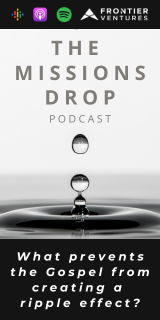
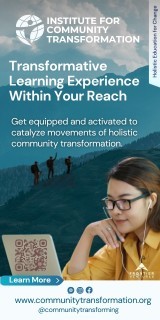

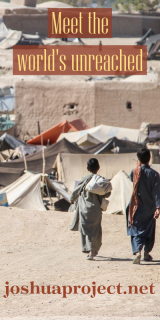
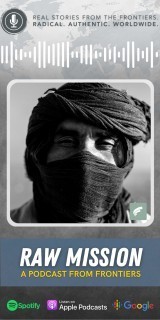
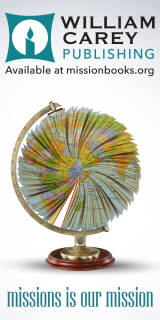
comments